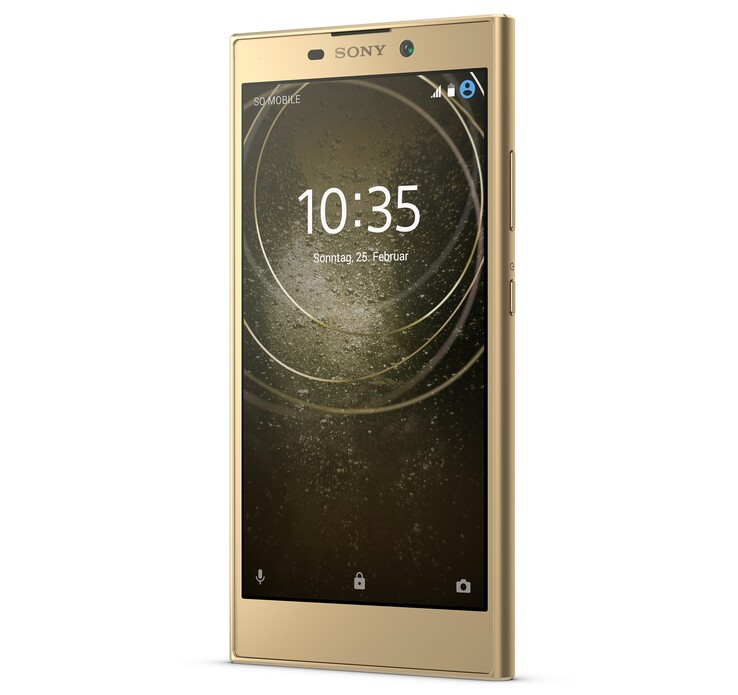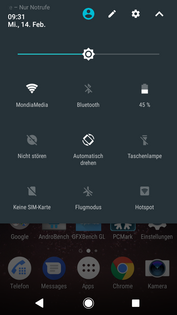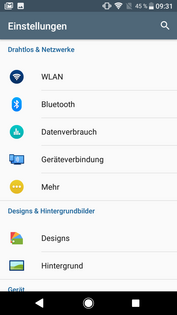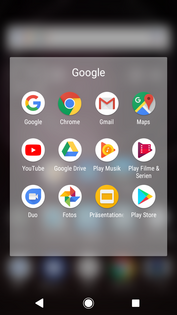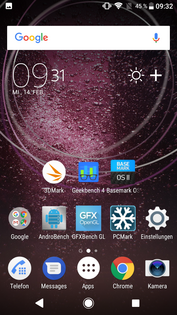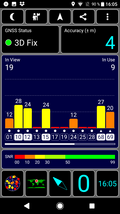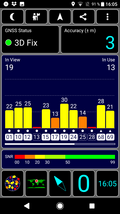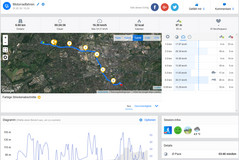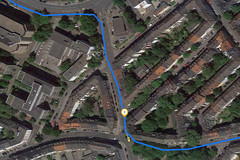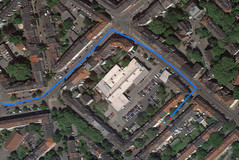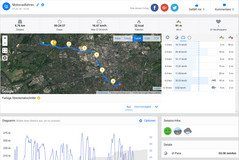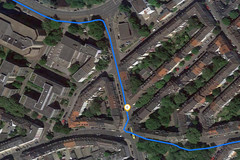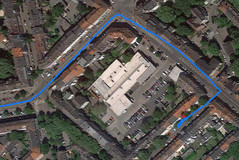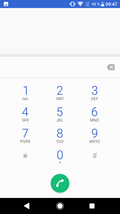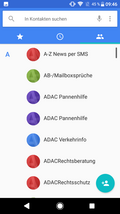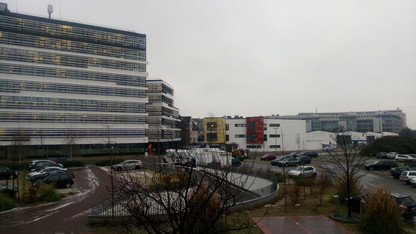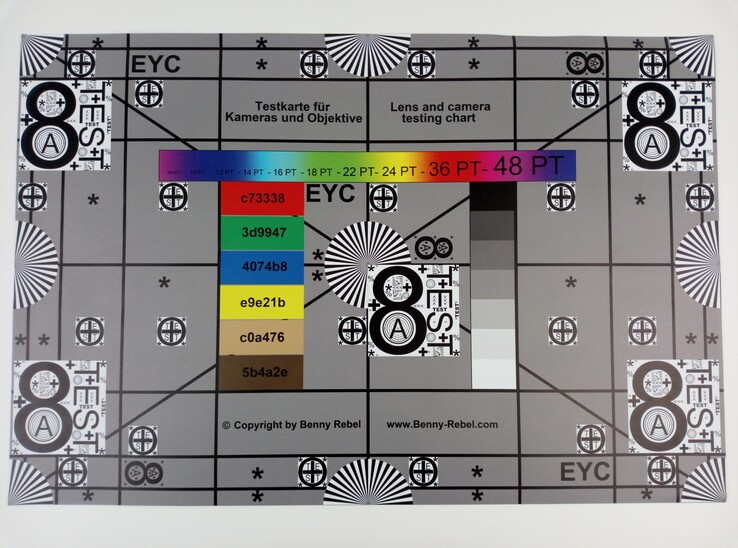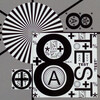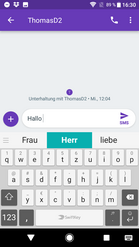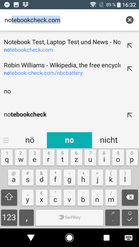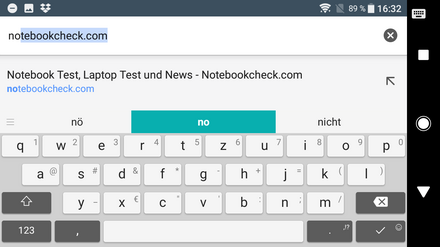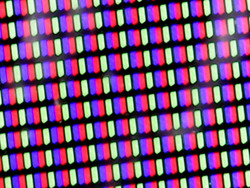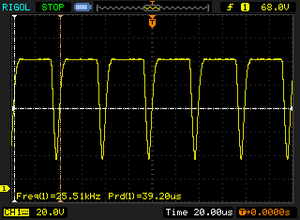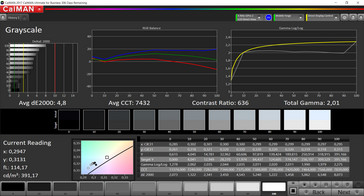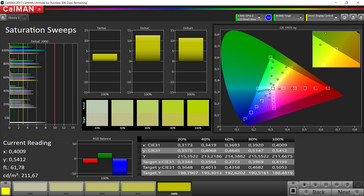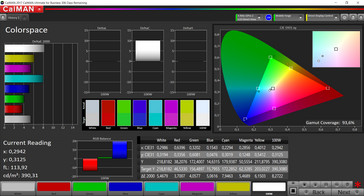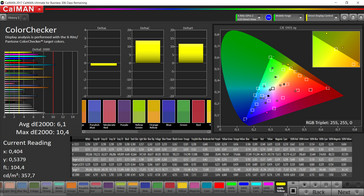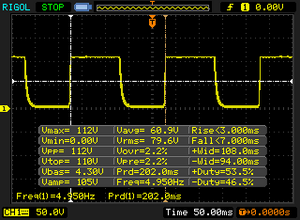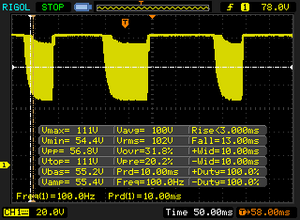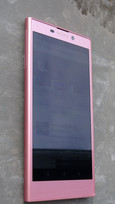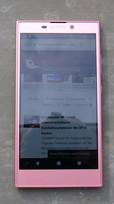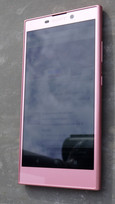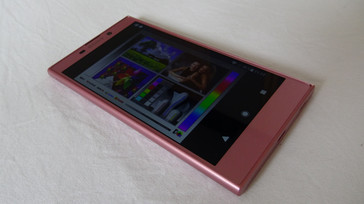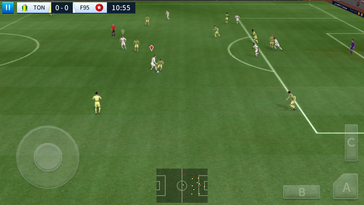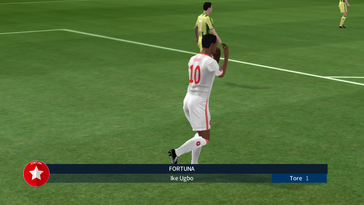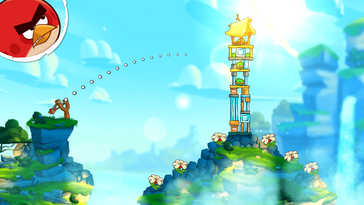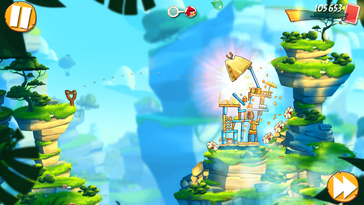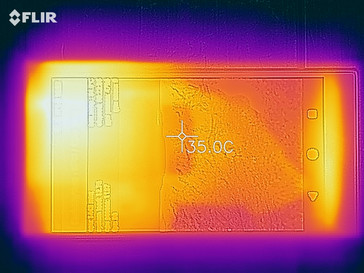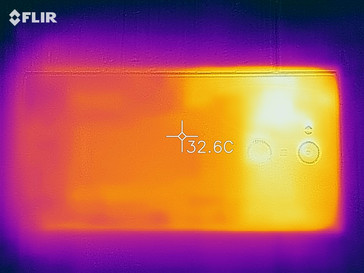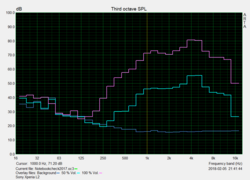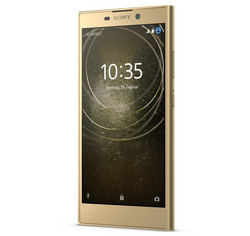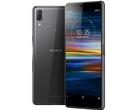Sony Xperia L2 Smartphone Review
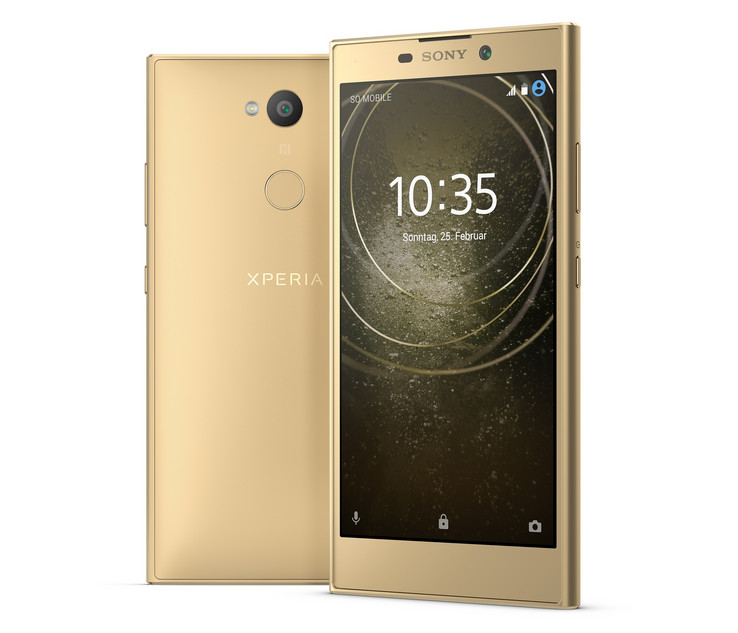
Sony has tried to pitch itself as a high-end smartphone manufacturer with its XZ series, but the Japanese manufacturer has a tradition of releasing mid-range hardware too. The Xperia L2 falls into the latter of those categories and is in direct competition with the Motorola Moto G5S Plus, the Nokia 6, Huawei P Smart, and the Samsung Galaxy J7. The Xperia L2 is more expensive than all our comparison devices with the exception of the Galaxy J7, which is equally priced; the P Smart is €10 (~$12) cheaper, while the G5S Plus and Nokia 6 are both €30 (~$37) cheaper. The Xperia L2 shares its 5.5-inch display with all but the Huawei P Smart, whose display is slightly larger. Equally, they all come with 32 GB of internal storage and Android Nougat 7.1.1. While the Xperia L2 has a recommended retail price of €249 (~$307), it is available online for €220 (~$271).
Whereas our comparison devices all have a full HD 1080p display, the Xperia has only a HD 720p panel. The device measures 150 x 78 x 9.8 mm (~5.9 x 3.1 x 0.4 in) and includes a fingerprint scanner located on the back of the case. There is no dust or water proofing though.
The Xperia L2 is powered by a 1.5 GHz quad-core MediaTek MT6737T processor and 3 GB of RAM. The device supports microSD expansion, allowing the 32 GB of internal storage to be expanded by up to 256 GB. The Xperia L2 has a 3,300 mAh non-removable battery and supports up to 400 MBit download and 150 MBit upload speeds over LTE.
The Xperia L2 has 13 MP main camera that supports High Dynamic Range (HDR) and optical image stabilization (OIS) while also being able to shoot full HD videos at up to 60 FPS. The device has an 8 MP front-facing camera.
Case
The Xperia L2 has a simple yet solid plastic case, unlike its premium XZ series siblings, the Xperia XZ1 and the XZ1 Compact. The Xperia L2 has a 3,300 mAh non-removable battery, the inability to remove batteries being a common occurrence with Sony smartphones. The device weighs 178 g (~6.3 oz) with dimensions of 150 x 78 x 9.8 mm (~5.9 x 3.1 x 0.4 in). The Xperia’s width and weight make one-handed use difficult.
Sony has placed the fingerprint scanner on the rear of the Xperia L2. This is a departure for Sony who, as with the XZ series, typically integrates fingerprint scanners within the power button on the side of their devices. This placement is common place with Android smartphones though, and as such the fingerprint scanner is easy and reliable to use. We found that the Xperia L2 only struggled to recognize fingerprints that were dirty or wet. Sadly, Sony has omitted a dedicated two stage camera button, something which even low-end Sony smartphones used to have.
The Xperia L2 is neither water nor dust resistant, and is available in black, gold or pink.
Connectivity
The Xperia L2 is powered by a 1.5 GHz, quad-core MediaTek MT6737T processor on a 28 nm and is based on the 64-bit Cortex A53 architecture.
The MT6737T is coupled with an ARM Mali-T720 MP2 GPU, which has a 600 MHz clock speed. A clock speed this low typically should render the Mali-T720 to be used exclusively in entry-level devices. 802.11 a/b/g/n/ac Wi-Fi and Bluetooth 4.2 are supported.
The German variant of the Xperia L2 supports one Nano-SIM and microSD card expansion up to 256 GB. This includes microSDHC and microSDXC too. The 32 GB of internal storage is typical for a device in this price range.
The USB Type-C port is on the bottom of the device, and is used for both charging and data transfer, while there is a 3.5 mm jack at the top. Additionally, the Xperia L2 has an LED notification light above the display.
Software
The Xperia L2 runs Android Nougat 7.1.1, upon which Sony adds its Xperia UI. Sony has preinstalled its own launcher, which has an app drawer and supports up to five homescreens. This could be replaced with other launchers that are downloadable from the Google Play Store. The notification shade remains the same as on stock Android, from which you can choose multiple quick actions, such as WiFi, Bluetooth, etc.
Communication and GPS
The Wi-Fi module is in accordance with the IEEE 802.11 standard and a/b/g/n/ac protocols. The 101 MBit/s transmission speed that we measured to our reference Linksys EA 8500 router is adequate. We measured signal attenuation of around -33 dBm with the device close to our O2 HomeBox 2 router.
The Xperia L2 supports LTE, GSM, UMTS, Bluetooth 4.2, and NFC, the latter of which is rarely found in devices at this price point.
| Networking | |
| iperf3 transmit AX12 | |
| Samsung Galaxy J7 2017 | |
| Nokia 6 | |
| Motorola Moto G5s Plus | |
| Sony Xperia L2 | |
| Huawei P smart | |
| iperf3 receive AX12 | |
| Samsung Galaxy J7 2017 | |
| Motorola Moto G5s Plus | |
| Nokia 6 | |
| Sony Xperia L2 | |
| Huawei P smart | |
GPS positioning works well. Despite the relatively low €249 (~$271) retail price Sony has equipped the Xperia L2 with an accurate and reliable GPS sensor which even works in buildings.
We tested location accuracy by comparing the Xperia L2 against a Garmin Edge 500, taking them both on motorbike ride to see if there were any differences between the distances covered by both devices. While the Garmin calculated the total distance travelled at 6.76 km (~4.2 mi), the Xperia L2 in conjunction with Google Maps put this at 6.69 km (~4.15 mi). A 70 m (~76 yd) difference over almost 7 km (~4.35 mi) is negligible; the Xperia L2 is 98.96% accurate to the distance calculated by the Garmin Edge 500. On closer inspection, Google Maps appeared to capture bends more tightly than the Garmin did. This may account for the small difference in the total distance travelled by both devices.
Telephone and call quality
The Xperia L2 uses Google's Phone app, which has the necessary basic features of a phone app, including being able to save favorites and retaining call history. The only gripe that we have is that the separation of the virtual number keys could be more clearly marked in our opinion.
The voice quality when making calls inside buildings is okay, with the quality improving when we made calls outside. Calls made over speakerphone are less than impressive though as the Xperia L2's speakers are somewhat weak. By contrast, voice quality is good when making calls using the included headphones.
Cameras
The Xperia L2 has a 13 MP main camera that has OIS and supports HDR, while also being capable of capturing videos in up to Full HD. Unfortunately, the Exmor RS camera sensor found in more expensive Sony smartphones is not included in the Xperia L2. As a result, photos lack detail and low-light performance is poor.
Similarly, while the specifications would suggest that the front-facing camera should perform well, its 8 MP sensor and 120° wide-angle lens produce disappointing results. Photographs tend to be overexposed and lack detail.
As with all of our smartphone reviews, we tested the Xperia L2's main camera in our laboratory under controlled lighting conditions. We took a photograph of a reference image that simulates difficult to capture details, such as fine lines or text on colored backgrounds. The results are unimpressive. Text looks blurry, colors are dull, and there are soft edges to fine lines.
Accessories and Warranty
The Xperia L2's warranty lasts twenty-four months. The box includes a quick start guide, warranty information, a USB Type-C cable, a power supply, and a set of headphones.
Please see our Guarantees, Return Policies and Warranties FAQ for country-specific information.
Input devices and Handling
The Xperia L2 uses stock Android capacitive buttons for device navigation. It would be nice if these capacitive buttons were to light up like hardware buttons do, but this feature is rarely implemented on smartphones. SwiftKey is the default keyboard, but this could be changed by installing a different keyboard downloadable from the Google Play Store.
The Xperia L2's display reacts well to pressure impulses. Touch accuracy therefore works correctly.
Display
| |||||||||||||||||||||||||
Brightness Distribution: 93 %
Center on Battery: 393 cd/m²
Contrast: 715:1 (Black: 0.55 cd/m²)
ΔE Color 6.1 | 0.5-29.43 Ø5
ΔE Greyscale 4.8 | 0.57-98 Ø5.3
Gamma: 2.01
| Sony Xperia L2 IPS, 1280x720, 5.50 | Motorola Moto G5s Plus IPS, 1920x1080, 5.50 | Nokia 6 IPS, 1920x1080, 5.50 | Samsung Galaxy J7 2017 Super AMOLED, 1920x1080, 5.50 | Huawei P smart IPS, 2160x1080, 5.65 | |
|---|---|---|---|---|---|
| Screen | 33% | 16% | 34% | 21% | |
| Brightness middle | 393 | 512 30% | 512 30% | 454 16% | 573 46% |
| Brightness | 400 | 500 25% | 501 25% | 463 16% | 568 42% |
| Brightness Distribution | 93 | 90 -3% | 94 1% | 86 -8% | 89 -4% |
| Black Level * | 0.55 | 0.35 36% | 0.36 35% | 0.63 -15% | |
| Contrast | 715 | 1463 105% | 1422 99% | 910 27% | |
| Colorchecker dE 2000 * | 6.1 | 4.6 25% | 6.4 -5% | 2 67% | 4.2 31% |
| Colorchecker dE 2000 max. * | 10.4 | 7.6 27% | 10.9 -5% | 5.3 49% | 6.4 38% |
| Greyscale dE 2000 * | 4.8 | 3.8 21% | 7.2 -50% | 1.7 65% | 4.6 4% |
| Gamma | 2.01 109% | 2.11 104% | 2.28 96% | 2.1 105% | 2.24 98% |
| CCT | 7432 87% | 6952 93% | 7904 82% | 6394 102% | 7157 91% |
* ... smaller is better
Screen Flickering / PWM (Pulse-Width Modulation)
| Screen flickering / PWM detected | 25510 Hz | ≤ 100 % brightness setting | |
The display backlight flickers at 25510 Hz (worst case, e.g., utilizing PWM) Flickering detected at a brightness setting of 100 % and below. There should be no flickering or PWM above this brightness setting. The frequency of 25510 Hz is quite high, so most users sensitive to PWM should not notice any flickering. In comparison: 53 % of all tested devices do not use PWM to dim the display. If PWM was detected, an average of 17900 (minimum: 5 - maximum: 3846000) Hz was measured. | |||
The maximum brightness of 394 cd/m² is ok for a device at this price point. This value increases to 396 cd/m² with the ambient light sensor on, while the Average Picture Level (APL50) test measured a maximum brightness of 393 cd/m² at the center of the display and a black level of 0.55 cd/m². The APL50 test measures a device's maximum brightness with uniformly distributed light and dark areas.
The display is an IPS panel, yet colors are dull in daily use. Despite this, the contrast level is acceptable. Furthermore, the Xperia L2 achieves acceptable sRGB color space, DeltaE and color temperature levels for a device at this price.
Display Response Times
| ↔ Response Time Black to White | ||
|---|---|---|
| 10 ms ... rise ↗ and fall ↘ combined | ↗ 3 ms rise | |
| ↘ 7 ms fall | ||
| The screen shows good response rates in our tests, but may be too slow for competitive gamers. In comparison, all tested devices range from 0.1 (minimum) to 240 (maximum) ms. » 22 % of all devices are better. This means that the measured response time is better than the average of all tested devices (21.5 ms). | ||
| ↔ Response Time 50% Grey to 80% Grey | ||
| 16 ms ... rise ↗ and fall ↘ combined | ↗ 3 ms rise | |
| ↘ 13 ms fall | ||
| The screen shows good response rates in our tests, but may be too slow for competitive gamers. In comparison, all tested devices range from 0.2 (minimum) to 636 (maximum) ms. » 25 % of all devices are better. This means that the measured response time is better than the average of all tested devices (33.7 ms). | ||
The Xperia L2 has stable viewing angles with no color deviations, even at low viewing angles, although the display does visibly darken when viewing angles are tight. The relatively low maximum brightness means that the content is difficult to read in natural light, which would be even more difficult if the Xperia L2 were to be used outside on a sunny day.
Performance
The Xperia L2 is powered by a MediaTek MT6737T, which is a quad-core processor with a 1.5 GHz clock speed. The processor is based on a 28 nm and a 64-bit Cortex A53 architecture. The ARM Mali-T720 MP2 handles the graphics, which has a lowly 600 MHz clock speed.
| AnTuTu v6 - Total Score (sort by value) | |
| Sony Xperia L2 | |
| Motorola Moto G5s Plus | |
| Nokia 6 | |
| Samsung Galaxy J7 2017 | |
| Huawei P smart | |
| PCMark for Android | |
| Work performance score (sort by value) | |
| Motorola Moto G5s Plus | |
| Nokia 6 | |
| Samsung Galaxy J7 2017 | |
| Huawei P smart | |
| Work 2.0 performance score (sort by value) | |
| Sony Xperia L2 | |
| Motorola Moto G5s Plus | |
| Nokia 6 | |
| Samsung Galaxy J7 2017 | |
| Huawei P smart | |
| GFXBench (DX / GLBenchmark) 2.7 | |
| T-Rex Onscreen (sort by value) | |
| Sony Xperia L2 | |
| Motorola Moto G5s Plus | |
| Nokia 6 | |
| Samsung Galaxy J7 2017 | |
| Huawei P smart | |
| 1920x1080 T-Rex Offscreen (sort by value) | |
| Sony Xperia L2 | |
| Motorola Moto G5s Plus | |
| Nokia 6 | |
| Samsung Galaxy J7 2017 | |
| Huawei P smart | |
| GFXBench 3.0 | |
| on screen Manhattan Onscreen OGL (sort by value) | |
| Sony Xperia L2 | |
| Motorola Moto G5s Plus | |
| Nokia 6 | |
| Samsung Galaxy J7 2017 | |
| Huawei P smart | |
| 1920x1080 1080p Manhattan Offscreen (sort by value) | |
| Sony Xperia L2 | |
| Motorola Moto G5s Plus | |
| Nokia 6 | |
| Samsung Galaxy J7 2017 | |
| Huawei P smart | |
| GFXBench 3.1 | |
| on screen Manhattan ES 3.1 Onscreen (sort by value) | |
| Sony Xperia L2 | |
| Motorola Moto G5s Plus | |
| Nokia 6 | |
| Samsung Galaxy J7 2017 | |
| Huawei P smart | |
| 1920x1080 Manhattan ES 3.1 Offscreen (sort by value) | |
| Sony Xperia L2 | |
| Motorola Moto G5s Plus | |
| Nokia 6 | |
| Samsung Galaxy J7 2017 | |
| Huawei P smart | |
| GFXBench | |
| on screen Car Chase Onscreen (sort by value) | |
| Motorola Moto G5s Plus | |
| Nokia 6 | |
| Samsung Galaxy J7 2017 | |
| Huawei P smart | |
| 1920x1080 Car Chase Offscreen (sort by value) | |
| Motorola Moto G5s Plus | |
| Nokia 6 | |
| Samsung Galaxy J7 2017 | |
| Huawei P smart | |
| Geekbench 4.4 | |
| 64 Bit Multi-Core Score (sort by value) | |
| Sony Xperia L2 | |
| Motorola Moto G5s Plus | |
| Nokia 6 | |
| Samsung Galaxy J7 2017 | |
| Huawei P smart | |
| 64 Bit Single-Core Score (sort by value) | |
| Sony Xperia L2 | |
| Motorola Moto G5s Plus | |
| Nokia 6 | |
| Samsung Galaxy J7 2017 | |
| Huawei P smart | |
Benchmark results reflect our impression that the Xperia L2 is underpowered for its price. The Xperia L2 is well behind most of our similarly priced comparison devices across all CPU benchmarks.
| JetStream 1.1 - Total Score | |
| Huawei P smart (Chrome 64) | |
| Motorola Moto G5s Plus (Chroem Version 62) | |
| Samsung Galaxy J7 2017 (Samsung Browser 5.4) | |
| Sony Xperia L2 | |
| Nokia 6 (Chrome 59.0.3071.125) | |
| Octane V2 - Total Score | |
| Samsung Galaxy J7 2017 (Samsung Browser 5.4) | |
| Huawei P smart (Chrome 64) | |
| Motorola Moto G5s Plus (Chroem Version 62) | |
| Sony Xperia L2 | |
| Nokia 6 (Chrome 59.0.3071.125) | |
| Mozilla Kraken 1.1 - Total | |
| Sony Xperia L2 | |
| Nokia 6 (Chrome 59.0.3071.125) | |
| Huawei P smart (Chrome 64) | |
| Motorola Moto G5s Plus (Chroem Version 62) | |
| Samsung Galaxy J7 2017 (Samsung Browser 5.4) | |
* ... smaller is better
There is better news when it comes to storage. The Xperia L2 has 32 GB of internal storage and supports microSD, microSDXC, or microSDHC cards up to 256 GB. The transfer speeds with our reference Toshiba Exceria Pro M501 card are good for a device at this price, albeit our comparison devices do perform better than the Xperia L2. Androbench 5 benchmark results show that the Xperia L2 is proficient at reading from big and small data blocks.
| Sony Xperia L2 | Motorola Moto G5s Plus | Nokia 6 | Samsung Galaxy J7 2017 | Huawei P smart | |
|---|---|---|---|---|---|
| AndroBench 3-5 | 129% | 73% | 41% | 133% | |
| Sequential Read 256KB | 70.6 | 237.4 236% | 273.1 287% | 198.5 181% | 269.4 282% |
| Sequential Write 256KB | 52.8 | 75.7 43% | 77.1 46% | 53 0% | 121.1 129% |
| Random Read 4KB | 22.32 | 37.94 70% | 33.8 51% | 25.86 16% | 66.1 196% |
| Random Write 4KB | 8.99 | 44.89 399% | 11.34 26% | 10.54 17% | 21.3 137% |
| Sequential Read 256KB SDCard | 70.6 ? | 79.6 ? 13% | 84.6 20% | 76.1 ? 8% | 82.3 ? 17% |
| Sequential Write 256KB SDCard | 52.8 ? | 58.8 ? 11% | 56.6 7% | 63.9 ? 21% | 72.4 ? 37% |
Games
Given the underpowered GPU, there are significant stutters when playing complex 3D games such as “Dream League Soccer 2018” or “Asphalt 8”. The Xperia L2 handles simple games better though, such as “Angry Birds 2”. The relatively low resolution of the 720p display is apparent when playing games, with images looking less clear than we have come to expect from smartphones released in 2018.
Emissions
Temperature
While the Xperia L2's temperatures are comparatively higher than most other smartphones, they are still acceptable in daily use. When stress testing the CPU and GPU with the Application Stability Test for at least an hour the front of the device reaches 39 °C (~102 °F), while the back remains below 38 °C (~100 °F).
(+) The maximum temperature on the upper side is 39 °C / 102 F, compared to the average of 35 °C / 95 F, ranging from 21.9 to 56 °C for the class Smartphone.
(+) The bottom heats up to a maximum of 37.4 °C / 99 F, compared to the average of 33.8 °C / 93 F
(+) In idle usage, the average temperature for the upper side is 31.9 °C / 89 F, compared to the device average of 32.7 °C / 91 F.
Speakers
The main speaker is located on the bottom of the case with a secondary speaker above the display. While the Xperia L2 manages a maximum volume of 80 dB(A) there are occasional tinny sounds which limit the overall sound quality.
The Xperia L2's sonic image is somewhat linear in the medium to high pitch range of 500 Hz to 7 kHz, with there also being a lack of bass. Moreover, super high tones around 8 kHz are underrepresented.
The included headphones are ok given the Xperia L2's price. They sound reasonable and have satisfactory noise behavior.
Sony Xperia L2 audio analysis
(+) | speakers can play relatively loud (86.7 dB)
Bass 100 - 315 Hz
(-) | nearly no bass - on average 33.5% lower than median
(±) | linearity of bass is average (10.4% delta to prev. frequency)
Mids 400 - 2000 Hz
(±) | reduced mids - on average 6% lower than median
(+) | mids are linear (6.8% delta to prev. frequency)
Highs 2 - 16 kHz
(±) | higher highs - on average 7.3% higher than median
(+) | highs are linear (6.4% delta to prev. frequency)
Overall 100 - 16.000 Hz
(±) | linearity of overall sound is average (27.2% difference to median)
Compared to same class
» 65% of all tested devices in this class were better, 6% similar, 28% worse
» The best had a delta of 12%, average was 38%, worst was 134%
Compared to all devices tested
» 80% of all tested devices were better, 4% similar, 16% worse
» The best had a delta of 4%, average was 25%, worst was 134%
Motorola Moto G5s Plus audio analysis
(+) | speakers can play relatively loud (88.9 dB)
Bass 100 - 315 Hz
(-) | nearly no bass - on average 24.2% lower than median
(+) | bass is linear (6.9% delta to prev. frequency)
Mids 400 - 2000 Hz
(+) | balanced mids - only 3.9% away from median
(+) | mids are linear (6.4% delta to prev. frequency)
Highs 2 - 16 kHz
(±) | higher highs - on average 7.9% higher than median
(±) | linearity of highs is average (8% delta to prev. frequency)
Overall 100 - 16.000 Hz
(±) | linearity of overall sound is average (20.7% difference to median)
Compared to same class
» 30% of all tested devices in this class were better, 9% similar, 61% worse
» The best had a delta of 12%, average was 38%, worst was 134%
Compared to all devices tested
» 50% of all tested devices were better, 8% similar, 42% worse
» The best had a delta of 4%, average was 25%, worst was 134%
Nokia 6 audio analysis
(±) | speaker loudness is average but good (78 dB)
Bass 100 - 315 Hz
(-) | nearly no bass - on average 17% lower than median
(±) | linearity of bass is average (11.4% delta to prev. frequency)
Mids 400 - 2000 Hz
(+) | balanced mids - only 2.5% away from median
(+) | mids are linear (4.1% delta to prev. frequency)
Highs 2 - 16 kHz
(+) | balanced highs - only 2% away from median
(+) | highs are linear (2.6% delta to prev. frequency)
Overall 100 - 16.000 Hz
(±) | linearity of overall sound is average (16.4% difference to median)
Compared to same class
» 4% of all tested devices in this class were better, 4% similar, 92% worse
» The best had a delta of 12%, average was 38%, worst was 134%
Compared to all devices tested
» 22% of all tested devices were better, 5% similar, 72% worse
» The best had a delta of 4%, average was 25%, worst was 134%
Samsung Galaxy J7 2017 audio analysis
(+) | speakers can play relatively loud (87.1 dB)
Bass 100 - 315 Hz
(-) | nearly no bass - on average 26.6% lower than median
(±) | linearity of bass is average (10.9% delta to prev. frequency)
Mids 400 - 2000 Hz
(+) | balanced mids - only 3.2% away from median
(+) | mids are linear (4.3% delta to prev. frequency)
Highs 2 - 16 kHz
(±) | higher highs - on average 6.1% higher than median
(+) | highs are linear (4.4% delta to prev. frequency)
Overall 100 - 16.000 Hz
(±) | linearity of overall sound is average (20.3% difference to median)
Compared to same class
» 27% of all tested devices in this class were better, 9% similar, 64% worse
» The best had a delta of 12%, average was 38%, worst was 134%
Compared to all devices tested
» 47% of all tested devices were better, 8% similar, 44% worse
» The best had a delta of 4%, average was 25%, worst was 134%
Huawei P smart audio analysis
(+) | speakers can play relatively loud (85.2 dB)
Bass 100 - 315 Hz
(-) | nearly no bass - on average 28.6% lower than median
(+) | bass is linear (6% delta to prev. frequency)
Mids 400 - 2000 Hz
(±) | reduced mids - on average 5.2% lower than median
(+) | mids are linear (6.6% delta to prev. frequency)
Highs 2 - 16 kHz
(±) | higher highs - on average 7.2% higher than median
(+) | highs are linear (4.9% delta to prev. frequency)
Overall 100 - 16.000 Hz
(±) | linearity of overall sound is average (23.8% difference to median)
Compared to same class
» 48% of all tested devices in this class were better, 9% similar, 43% worse
» The best had a delta of 12%, average was 38%, worst was 134%
Compared to all devices tested
» 67% of all tested devices were better, 7% similar, 26% worse
» The best had a delta of 4%, average was 25%, worst was 134%
Frequency diagram in comparison (Checkboxes are de/selectable)
Power Management
Power consumption
The Xperia L2's energy consumption is on par with our comparison devices. Qnovo adaptive charging technology and a Stamina energy saving mode are included, both of which are typically found on Sony’s more expensive smartphones.
| Off / Standby | |
| Idle | |
| Load |
|
| Sony Xperia L2 3300 mAh | Motorola Moto G5s Plus 3000 mAh | Nokia 6 3000 mAh | Samsung Galaxy J7 2017 3600 mAh | Huawei P smart 3000 mAh | |
|---|---|---|---|---|---|
| Power Consumption | -40% | -36% | 22% | -44% | |
| Idle Minimum * | 0.5 | 0.83 -66% | 0.63 -26% | 0.39 22% | 0.62 -24% |
| Idle Average * | 1.12 | 1.67 -49% | 1.75 -56% | 1.06 5% | 1.76 -57% |
| Idle Maximum * | 1.25 | 1.85 -48% | 1.87 -50% | 1.08 14% | 1.87 -50% |
| Load Average * | 2.92 | 3.47 -19% | 3.56 -22% | 1.82 38% | 4.47 -53% |
| Load Maximum * | 4.66 | 5.41 -16% | 5.85 -26% | 3.21 31% | 6.39 -37% |
* ... smaller is better
Battery Life
The Xperia L2 has a relatively large 3,300 mAh thanks to its large dimensions. We found that with regular use the device lasted up to thirty-six hours between charges. In our WiFi test the Xperia L2 lasted 690 minutes before completely discharging, which is acceptable considering the runtimes of our comparison devices.
| Sony Xperia L2 3300 mAh | Motorola Moto G5s Plus 3000 mAh | Nokia 6 3000 mAh | Samsung Galaxy J7 2017 3600 mAh | Huawei P smart 3000 mAh | |
|---|---|---|---|---|---|
| Battery Runtime | |||||
| WiFi v1.3 | 690 | 974 41% | 670 -3% | 904 31% | 565 -18% |
Pros
Cons
Verdict
The positives of the Sony Xperia L2 include a long battery life, a relatively large 32 GB internal storage, a reliable fingerprint scanner and that it is well constructed. We would expect better value for money from a device released in 2018, as the Xperia L2 fails to match the competition, with devices such as the Huawei P Smart being more powerful while including dual cameras and an up-to-date version of Android too.
The Sony Xperia L2 scores highly for its battery life, storage capacity and workmanship, but it simply does not do enough to justify the €249 (~$307) recommended retail price.
While the 5.5-inch screen is a good size, its 720p resolution is low for a smartphone released in 2018. Compounding this are the cameras and the overall performance, both of which are unimpressive. A combination of a slow CPU and GPU means that similarly priced smartphones significantly outperform the Xperia L2.
Sony Xperia L2
-
02/20/2018 v6(old)
Thomas Meyer


 Deutsch
Deutsch English
English Español
Español Français
Français Italiano
Italiano Nederlands
Nederlands Polski
Polski Português
Português Русский
Русский Türkçe
Türkçe Svenska
Svenska Chinese
Chinese Magyar
Magyar